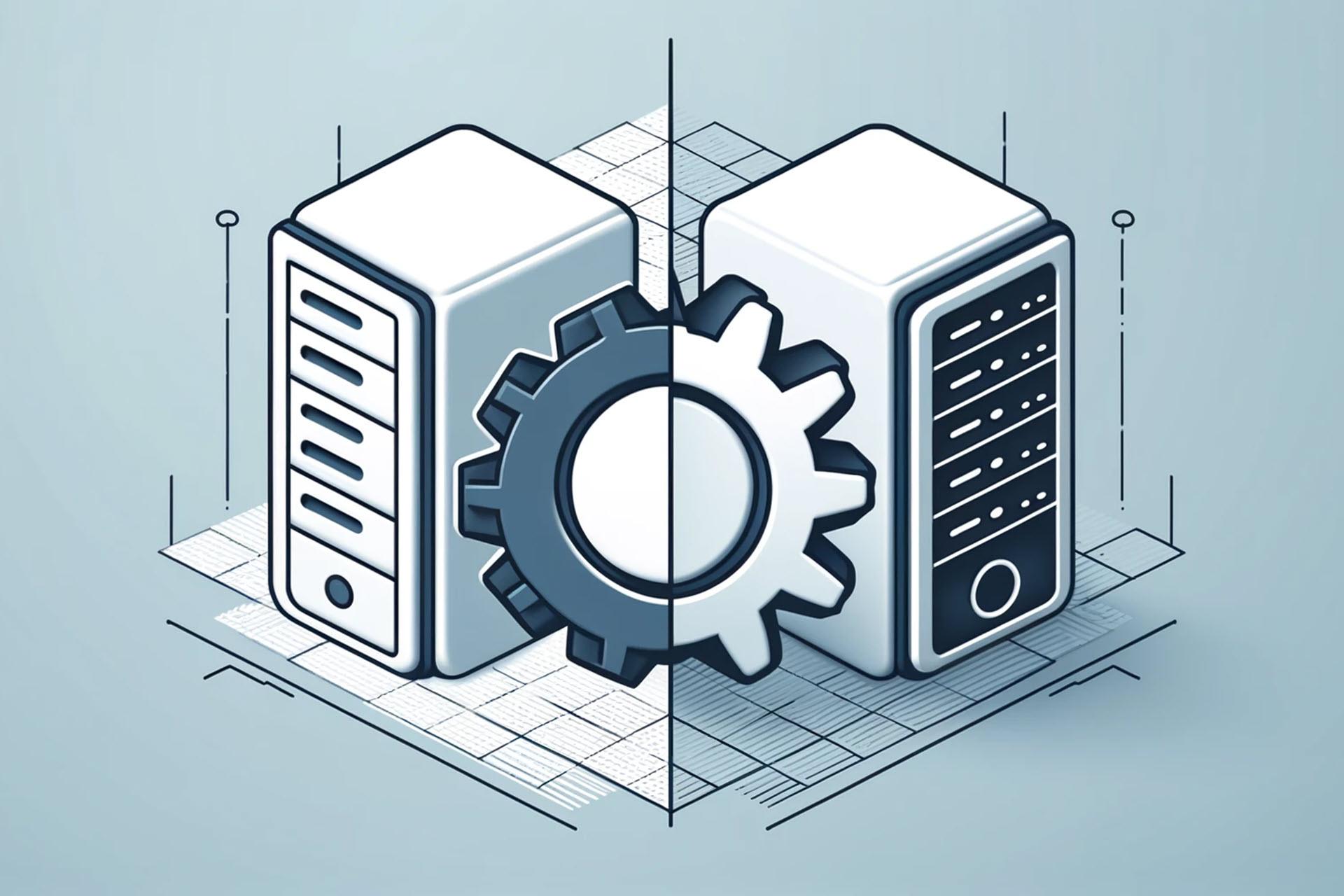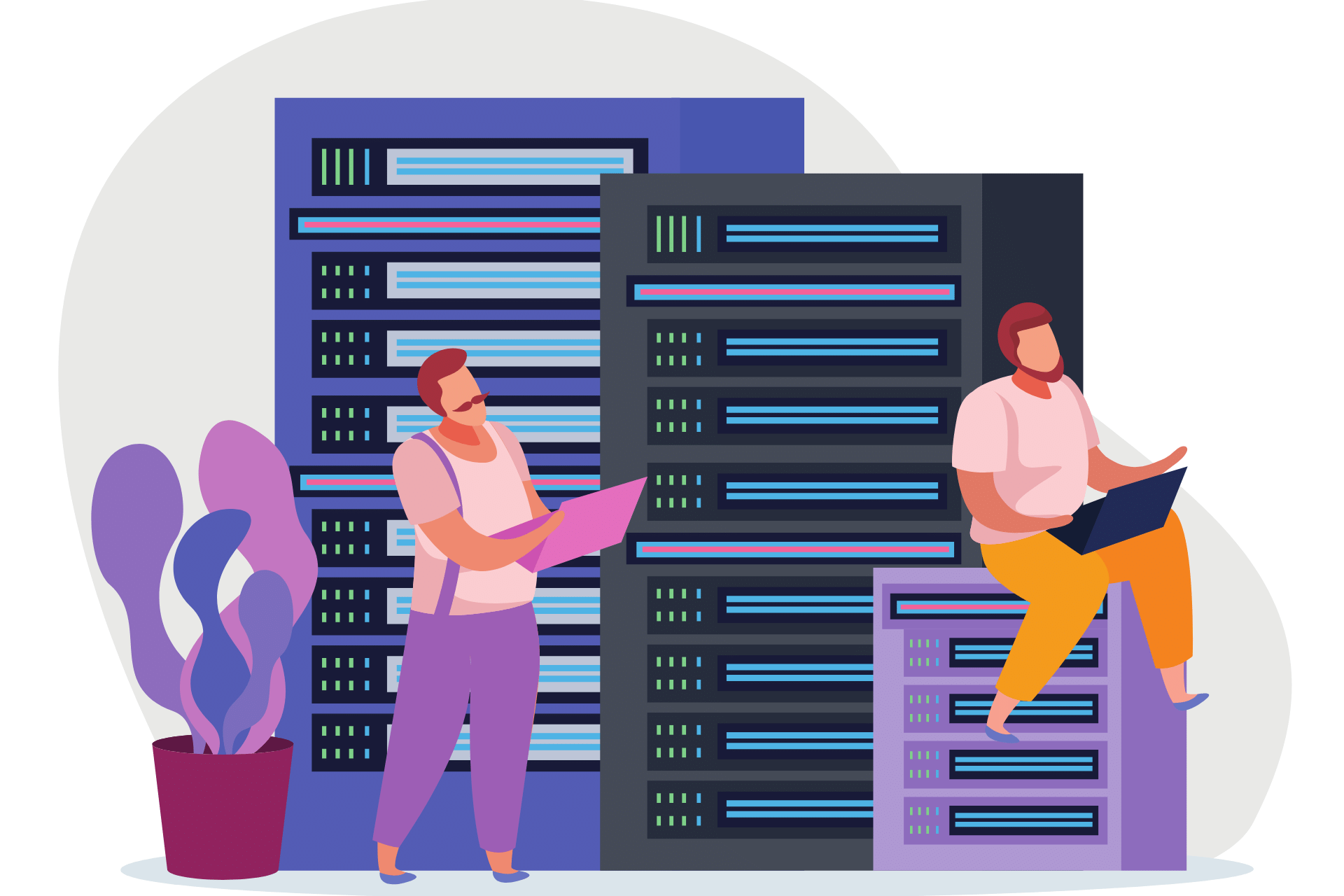Dedicated servers are an essential component of any enterprise. Business continuity relies on servers operating continuously, and each mistake results in costly downtime. That’s why server maintenance is so important.
Keeping a server running involves more than just loading the latest patches and updates. Use our server maintenance checklist to ensure the smooth operation of your server and avoid downtime.
Here’s is our list of 15 server maintenance tips to help you better manage your hardware and avoid the most common issues.
1. Double-Check & Verify Your Backups
If you’ve ever had to recover from a catastrophic drive failure, you know how important data is to the smooth operation of a business.
With a good backup strategy, it’s better to have them and not need them than need them and not have them. Schedule a few minutes every week (or every day) to check server backups. Alternatively, mirror the server environment to a virtual machine in the cloud and test it regularly.
2. Check the RAID array
Many dedicated servers run a RAID (Redundant Array of Independent Disks) array. In RAID, multiple hard drives act as one storage device in the event of a single disk failure.
Some types of RAID are designed for performance, while others are created for redundancy. In most cases, modern RAID arrays have advanced monitoring tools. A quick glance at your RAID monitoring utility can alert you to potential drive failures. This lets you plan drive replacements and rebuilds in a way that minimizes downtime.
3. Verify Storage Utilization
Periodically check your servers’ hard drive usage. Servers generate a lot of log files, old emails, and outdated software packages.
If it’s important to keep old log files, consider archiving them to external storage. Old emails can also be archived or deleted. Some application updaters don’t remove old files. Fortunately, some package managers have built-in cleanup protocols that you can use. You can also find third-party utilities for managing old software files.
Hard drives are not just used for storage. They also use a swap file, which acts like physical memory. If disk utilization gets above 90%, it can interfere with the swap file, which can severely degrade performance.
4. Review Server Resource Usage
In addition to reviewing disk space, it’s also smart to watch other server usages.
Memory and processor usage can show how heavily a server is being used. If CPU and memory usage are frequently near 100%, it’s a sign that your server may be overtaxed. Consider reducing the burden on your hardware by upgrading or adding additional servers. Other options include reassigning certain workloads to a cloud environment, thus implementing a hybrid cloud solution.
5. Update Your Control Panel
Control panel software (such as cPanel) must be updated manually. When updating cPanel, only the control panel is updated. You still need to update the applications that it manages, such as Apache and PHP.
6. Update Software Applications
Depending on your server configuration, you may have many different software applications. Some systems have package managers that can automatically update software. For those that don’t, create a schedule to review available software updates.
This is especially true for web-based applications, which account for the vast majority of breaches. Keep in mind that some operating systems may specifically require older application versions. In cases where you must use older software in a production environment, take care to avoid exposing such software to an open network.
Learn more about automating the process of server management by referring to our article Server Automation Guide.
7. Examine Remote Management Tools
Check remote management tools, including the remote console, remote reboot, and rescue mode. These are especially important if you run a cloud-based virtual server environment or are managing your servers remotely. Secure remote access for your employees if your organization practices remote work.
Regularly check in on these utilities to ensure they are functioning properly. Rebooting can solve many problems on its own. A remote console allows you to log in to a server without being physically present. Rescue mode is a Red Hat solution, but most server operating systems have a management or safe mode you can remotely boot to make repairs.
8. Verify Network Utilization
Similar memory and CPU usage, server loads have a network capacity. If your server is getting close to the maximum capacity of the network hardware, consider installing upgrades. In addition to the capacity of the network, you might consider using network monitoring tools. These tools can watch your network traffic for unusual or problematic usage.
Monitoring traffic patterns can help you optimize your web traffic. For example, you might migrate frequently-accessed resources to a faster server. You can also track unusual behavior to identify intrusion attempts and data breaches, and manage them proactively.
9. Verify Operating System Updates
OS updates can be a tricky field to navigate. On the one hand, patches and updates can resolve security issues, expand functionality, and improve performance. Hackers often plan cybersecurity attacks around “zero-day” exploits. That is, they look at the OS patches that are released and attack those weaknesses before a business can patch the vulnerability.
On the other hand, custom software can experience conflicts and instability with software updates. Dedicate time regularly to review OS updates. If you have a sensitive production environment, consider creating a test environment to test updates before rolling them out to production.
10. Physically Clean Server Hardware
Schedule time to physically clean and inspect servers to prevent hardware failure. This helps keep dust and debris out of the circuit boards and fans.
Dust buildup interferes with heat management, which is crucial because heat is the enemy of server performance. While you’re cleaning, visually inspect the servers and server environment. Make sure the cabinets have plenty of airflow. Check for any unusual wiring or connections. An unexpected flash drive might be a security breach. An unauthorized network cable might create a data privacy concern.
11. Check for Hardware Errors
Modern server operating systems maintain logs of hardware errors.
A hardware error could be a SMART error on a failing hard drive, a driver error for a failing device, or random errors that could indicate a memory problem. Checking your error logs can help you pinpoint and resolve a hardware problem before it escalates to a system crash.
12. Review Password Security
Evaluate your password policy regularly. If you are not using an enterprise password management system, start now.
You should have a system that automates good password hygiene. If you don’t, consider instructing users to change passwords manually.
13. Evaluate User Accounts
Most businesses experience some level of turnover, and it’s easy for user accounts to be overlooked.
Review the user account list periodically, and remove any user accounts no longer needed. You can also check account permissions to make sure they are appropriate for each user. While reviewing this data, you should also examine client data and accounts. You may need to manually remove data for former clients to avoid legal or security complication.
14. Consider Overall Server Security
Evaluate your server security policies to make sure that they are current and functioning. Consider using a third-party network security tool to test your network from the outside. This can help identify areas that you’ve overlooked and help you prevent breaches before they occur.
15. Check Server Logs Regularly
Servers maintain logs that track access and errors on the server. These logs can be extensive, but some tools and procedures make them easier to manage.
Review your logs regularly to stay familiar with the operation of your servers. A logged error might identify a hardware issue that you can fix before it fails. Anomalies in access logs may indicate unauthorized user activity or intruder access.
Regular Server Maintenance Reduces Downtime & Failures
With this checklist, you should have a better understanding of how to perform routine server maintenance.
Regular maintenance ensures that minor server issues don’t escalate into a disastrous system failure. Many server failures as a result of preventable situations due to poor planning.



